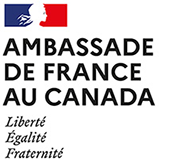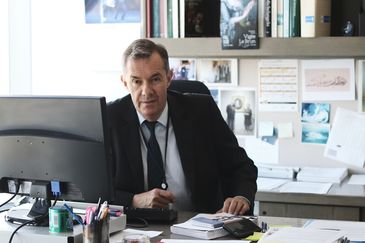We spoke with Paul Lang, a real lover of French art, the current Chief Curator of the National Gallery of Canada(NGC) in Ottawa, and the curator of the Gallery’s European art collection.
- Can you tell us about your background and your current work?
I am French and Swiss. I studied the arts in Geneva and finished with a doctorate in 1989. I’ve always been interested in French art: my Master’s work was dedicated to Géricault and my doctorate focused on the paired paintings given to the Duke of Aumale by Claude Lorrain.
Just after I finished my studies, I spent 15 years as a scientific collaborator at the Swiss Institute for Art Research in Zurich. It was there that I learned to work with museum collection catalogues, and it was especially then that I started being assigned my first exhibition commissions. My first exhibition was dedicated to the topic of Cupid and Psyche in the Neoclassical Period. In 2000, I was named Chief Curator of the Museé d’Art et d’Histoire de Genève, where I stayed for 11 years. I was still interested in promoting French art outside the borders of continental France, particularly with a retrospective on Philippe de Champaigne in 2007 in collaboration with the Palais de Beaux-Arts de Lille and then in 2010, my last exhibition was dedicated to Jean-Baptiste Corot: Corot en Suisse. I had already collaborated with French institutions before that, such as with the Paris Musée de la Musique in 2007 on the resonance of the works of Richard Wagner in the fine arts.
Finally, I’ve been the Deputy Director and Chief Curator of the National Gallery of Canada since 2011. Unlike in Geneva, here I have an acquisitions budget that allows me to seat French art at the heart of the collection. My first exhibition here was developed in collaboration with the Musée d’Orsay: a retrospective on the works of Gustave Doré in 2014 and then one focused on Elisabeth Louise Vigée Le Brun in 2016 in collaboration with the Grand Palais and the Metropolitan Museum. The latter was the first real retrospective focused on this particular painter at the international scale. I’m currently working on an exhibition on the collected works of Ordrupgaard. This offers a very thorough view of 19th century French painting, from Delacroix to Cézanne.
Initially, moving here was a bit of a culture shock that I might have underestimated. That’s when I realized how European I am.
- What do you think you bring to the museum?
What’s interesting is that my position has often been given to European people. The predecessor of my predecessor Colin Bailey is a great example, because he is English. I asked the jury the same question when they took interest in my dossier, telling them that I wasn’t a specialist in Canadian art.
The museum has five departments that I supervise as Chief Curator, but I do double duty because I am also the curator of the European art department. The library and the archives are also in my portfolio.
The five departments of the Gallery:
- Contemporary Art
- Indigenous Art
- Canadian Art
- European, American and Asian Art
Prints and Drawings
This country remains one of immigration, one that is extraordinarily open to others. The institution was obviously looking for a form of harmony, hoping to recruit someone with complementary experience. Beyond their interest in my relationships with major European institutions, I think the Gallery also knew that I was fond of French art. My predecessor was a specialist in Italian art: it was a way of cultivating one of the major cultural accents of our collection. Over the course of one of my hiring interviews, I suggested that we bring back our collaborative projects with France’s leading institutions.
- Has there been an NGC exhibition that stood out to you in particular?
They say that for a curator, it’s always the latest that is the most beautiful, but I have to admit that I’ve rarely had as much fun as I had working on Elisabeth Louise Vigée Le Brun. We made a great team, with a specialist on the artist, Joseph Baillio; my colleague from the New York Metropolitan Museum of Art, Katharine Baetjer; and the director of the Grand Palais, Laurent Salomé (now at the Château de Versailles), who became my friends. We had an excellent set designer as well, who made this exhibition possibly the one of which I’m most proud, especially from an aesthetic point of view.
Vigée Le Brun was an amazing artist. I had suggested the subject when I arrived, but I admit that I hadn’t yet recognized the full measure of her talent. Working on a female painter is different. I was interested in Angelika Kauffmann, about whom I had published several articles and collection catalogue records, but now I’m convinced that Vigée Le Brun is much more original. The period fascinates me, and I think that I’ve become an art historian because history interests me. Vigée Le Brun’s work is a seismograph of the societal upheaval of her time.
What frightened a lot of museum directors is also that it is only portraits. Some thought that it wouldn’t work well and that people would be bored. We are presenting 80 portraits here, and the French version of the catalogue ran out a month before the exhibition closed. This was a very emotional moment, seeing our enthusiasm meet the interest of the public.
It’s also an opportunity for me to applaud our collaboration with the Embassy of France, which helped us to bring in a fair number of presenters. Their work in terms of promotion and communication has been quite simply exemplary.

